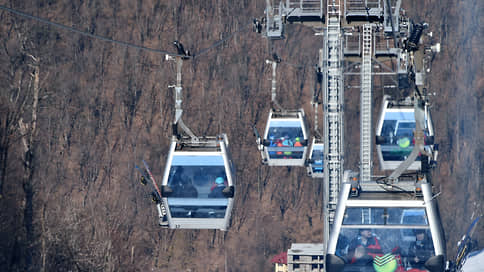The length of ski slopes at Russian resorts will increase by 50% by 2035
[ad_1]

The high activity of state-owned companies and private investors contributes to the active development of ski infrastructure in Russia. The total length of such routes in the next five years may increase by one and a half times, and the number of rooms in winter resort hotels may more than triple. The tourist flow to resorts is still showing moderate growth, increasing this season by 5–11% year on year. Because of this, participation in ski projects remains risky for business.
The length of ski slopes at Russian resorts will increase by 50% by 2035, from the current 1.3 thousand to 2 thousand km, NF Group calculated. The total number of hotel rooms at winter resorts will increase 3.7 times: from 9.3 thousand to 35 thousand rooms. Vice-President of the Association of Tour Operators of Russia Sergei Romashkin notes that in total in Russia there are now 150–200 places available for skiing or snowboarding, including urban and suburban locations with one ski lift.
General Director of Kavkaz.RF Andrey Yumshanov explained that until 2031, the development of four mountain resorts is planned – Elbrus, Veduchi, Mamison, Armkhi, a project on the Caspian Sea coast. In total, an additional 22.5 thousand will be created, excluding Armkhi. The length of resort routes will increase from 24 to 100 km, and the annual tourist flow will increase from 1.8 million to 5.2 million people. The Mantera Group (engaged in the development of resorts in Arkhyz, Krasnaya Polyana and Lago-Naki) did not immediately respond to Kommersant. The press service of Sberbank explained that at the Manzherok resort (it is being developed by the state bank) there are now 30 km of ski slopes, in the future their length is planned to be up to 200 km.
According to NF Group, in Russia, a total of 4.2 million people, or 3% of the population, snowboard or ski. The value is low, but since 2014 it has been constantly growing, notes NF Group partner Olga Shirokova. As an example, she cites Austria and Switzerland, where 30% of the population is involved in skiing. On average in Europe the figure reaches 10–20%, she adds.
Sergey Romashkin notes that this year the demand for accommodation at Russian ski resorts has grown by an average of 8% year-on-year, MTS Travel says about 5%, Ostrovok.ru – about 10%, Alean – by 11% year on year. About 50% of the total tour sales come from Krasnaya Polyana, 11% from Sheregesh, the rest comes from Arkhyz, Dombay, Belokurikha, Manzherok and other resorts. According to Alean, another 5% of sales come from the resorts of Yuzhno-Sakhalinsk (“Mountain Air”), Murmansk (“Big Woodyavr”) and Chelyabinsk (“Sunny Valley”).
Sales of Sheregesh for the current season, according to Alean, have tripled. This is due both to the development of the resort and to the interest in the location: due to weather conditions, the season lasts from mid-November to April. In Yandex Travels, the most pronounced increase in interest this year is observed in the Elbrus region and Altai. Interest in placements in locations has increased two to three times over the year. The average cost of a booked night in the Sochi mountain cluster, according to the service, increased by 29% over the year, to 8.9 thousand rubles. In Sheregesh – by 27%, up to 10 thousand rubles, in the Altai Republic – by 78%, up to 12.8 thousand rubles, in Terskol – by 43%, up to 8.9 thousand rubles.
Andrey Yumshanov talks about the high interest of investors in projects at ski resorts: “In the last year alone, seven residents came to Elbrus, before that there was not a single one there.” Sberbank calls Manzherok a driver for the region’s economy, pointing out that ten development companies are currently developing their projects in the location.
Although Sergei Romashkin draws attention to the fact that hotels and trails alone are not enough for the development of resorts. Nowadays, according to his observations, tourists less often go there for sporting purposes; more often they are not ready to spend more than two or three days actively skiing. The expert believes that participation in projects for the construction of hotels in coastal clusters is less risky for investors. According to him, 55–60% of domestic tourists go to the sea every year, while the audience of ski resorts is disproportionately lower.
[ad_2]
Source link





